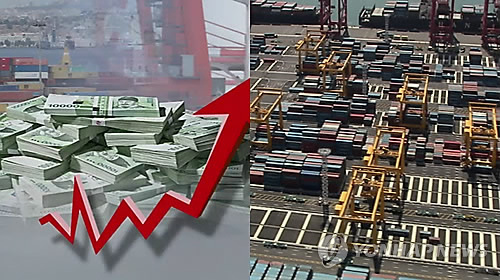Expectations are growing that Korea’s gross national income per capita will reach the level of $30,000, regarded as the threshold to enter the group of truly advanced economies, for the first time this year.
Asia’s fourth-largest economy has failed to achieve the landmark figure for more than a decade since its per capita GNI first surpassed $20,000 in 2006.
Local economic research institutes estimate the country’s per capita GNI to be somewhere between $29,500 and $29,800 in 2017, on the assumption that its economy grows 3 percent and the won-dollar exchange rate averages 1,130 won per dollar.
There is the possibility that Korea will reach the elusive target this year, if its annual growth rate is a little higher and the value of its currency further rises against the dollar in the remaining days of the year.
With per capita GNI above $30,000, an economy can be seen as fully sophisticated with advanced manufacturing technology and a competitive service sector.
If Korea surpasses the level, it would become the seventh country with a population of more than 50 million that has per capita GNI over $30,000.
The six countries that have joined the “30-50 club” so far are the US, Japan, the UK, Germany, France and Italy.
Korea’s per capita GNI, which peaked at $27,892 in 2014, stood at $27,561 last year, up 1.4 percent from the previous year’s $27,171, according to data from the Bank of Korea.
At the outset of the year, the prevalent forecast was that the country would see its gross national income per capita exceed $30,000 in 2019 or 2020 at the earliest.
With the economy having expanded less than 3 percent in the previous two years, economic policymakers set the growth target for this year at 2.6 percent, while some private institutions cautioned the growth rate might be down to 2 percent.
The Korean currency was expected to continue to weaken against the greenback, as the won-dollar exchange rate rose from 1,050 won in 2014 to 1,130 won in 2015 and 1,160 won last year.
So far this year, however, growth momentum and the value of the won have been stronger than expected.
On the back of a steep increase in semiconductor exports, expanded facility investments and additional fiscal spending, the Korean economy is now forecast to grow more than 3 percent this year.
The BOK last week said the country’s economy expanded 1.4 percent from the previous three months in the July-September period, nearly double market expectations. The corresponding figures stood at 1.1 percent and 0.6 percent, respectively, in the first and second quarters.
Even if the economy records zero growth for the rest of the year, the annual growth rate would still reach 3.1 percent, according to BOK officials.
The won has also gained ground against the dollar, as the country extends a streak of monthly current account surpluses and foreign investors turn to net buyers of Korean shares.
The won-dollar exchange rate has continued to fall over the past month to close to the yearly low of 1,112.8 won recorded on July 27.
The downward trend is set to be affected by whether US President Donald Trump’s ongoing tour of Asian countries serves to ease tensions on the Korean Peninsula.
Experts say Korea’s per capita GNI is likely to exceed $30,000 if the average exchange rate falls below 1,120 won this year, combined with an economic growth rate above 3 percent.
There has been speculation that President Moon Jae-in’s administration may be tempted to guide the won to further appreciate in order to achieve the landmark goal that has eluded previous governments.
But most experts dismiss the possibility as a further strengthening of the value of the won would have negative effects on the country’s exports.
The prospect of per capita GNI above $30,000 is overshadowed by a reduction in the household share of the country’s gross national income.
According to figures from the National Assembly Budget Office, households accounted for 62 percent of gross national income last year, down from the 72.1 percent in 1990.
The share of companies rose from 14 percent to 24.6 percent over the cited period, with the corresponding figure for the government slightly down from 14 percent to 13.4 percent.
Data from the central bank also showed household income decreased 1 percent from a year earlier on real terms in the April-June period of the year, extending the streak of declines to seven quarters.
Economists say Korea needs to balance policies to boost corporate activity with measures to increase household income.
“Structural reforms should be carried out to bolster growth potential and the service sector needs to be further developed,” said Lee Geun-tae, a researcher at the LG Economic Research Institute.
Park Jae-wan, a former minister of strategy and finance, called for an overhauling of the economic and social systems, saying the country should not be complacent with per capita income reaching $30,000, but strive to raise it to $40,000 and beyond.
By Kim Kyung-ho (khkim@healdcorp.com)


